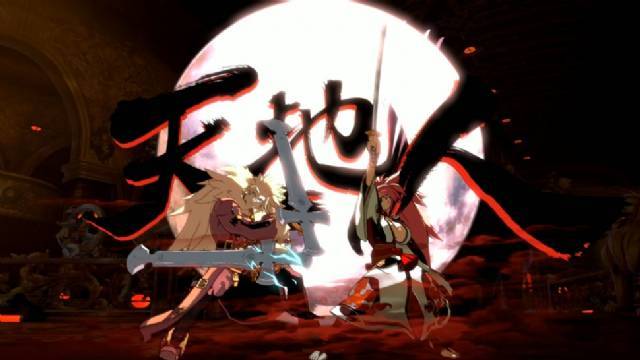Sequel on sequel
The development of Guilty Gear X lasted less than two years. With the move to Dreamcast and PS2 , Arc System first experimented with the typical high-res sprites that distinguish the company’s style: defined as the release ” among the most spectacular 2D titles ever made ” (at least visually speaking), the game also excels in terms of fluency in animations.
Between the preview version of arcade version , and subsequent porting (also for Windows), Guilty Gear X exceeded the popularity of its prequel, consolidating Arc System’s position in the fighting games environment. The title did not just refine the predecessor’s graphics by introducing new fighters and mechanics-like Instant Kill , or the ability to erase their moves (using the Roman Cancel ).
Subsequent re-releases of the game (the 2003 arcade, called ” ver 1.5 “, represents the last example) helped balance and finish the beat-up, adding even unedited characters (albeit exclusively in Japanese, with the X Plus version ).
The real success came with Guilty Gear XX , a real sequel to GGX.
Probably the most famous brand 2D incarnation, the game (sometimes called X2 ) conquered criticism: in addition to being richer in all directions (from the combat system to the roster) , it accompanied the more classic modes a story mode worthy of this name , the first time since the brand was created.
Providing dubbing (in Japanese) and multiple endings for each character, the mode contributed not a little to the expansion of the lore of Guilty Gear, finally allowing Ishiwatari to indulge themselves really with the plot of the series.
Regardless of the successful sales of the title, Arc System remains a relatively small company: the practical difficulties in delivering a completely new product to each release, and the feedback of users (so that developers want to improve their product more and more) , generated a – not too much – peculiar trend that still distinguishes Arc System. XX’s revenues, merchandise and some minor spin-offs basically financed the creation of an updated version of the title, which in turn allowed the team to work on a further review … and so on. In other words, a business model similar to that popularized by Capcom years ago (only, with far less budget behind). With the versionX2 Reload , and the next Slash XX , the game was then enriched with new combo, characters, moveset, and even a new HUD.
New projects
With the popularity of Guilty Gear, Arc System ended up inevitably working on the realization of some licensed title on behalf of several publishers (sometimes also of major importance). In addition to the Dragon Ball series : Supersonic Warriors , conceived for Nintendo laptops ( GBA and DS ), the company took a hit on the saga of Ken the Warrior (commissioned by Sega ), as well as another yet another fighting game for Capcom Sengoku Basara).
Regardless of the generally warm / positive reception, none of the “minor” designs of Arc System could ever really achieve the refinement and quality of the Guilty Gear, still a true diamond tip of the company. Despite the resolution and the aspect ratio kept in 4: 3, new XX reviews continued to alternate over the years, ranging from arcade (2006) to PS2 (2007, 2008), Nintendo Wii(2007, 2009) to PSP (2008), Xbox 360 to PS3 (2012, 2013), PSVita (2013) to Windows(2015). The fans were thus able to enjoy Guilty Gear XX Accent Core ,XX Accent Core Plus and XX Accent Core Plus R , still a “definitive” version of the game.
The constant addition of content and the re-balancing of characters did not, however, be enough to save the series from becoming more and more time-consuming. With the coming of the seventh generation of Arc System consoles, he tried to renew himself, proposing a new Guilty Gear-based spiritual franchise: the audience came for the first time in touch with the new, lucky BlazBlue saga .
Even Ishiwatari (though involved in the new series, though as a simple composer) almost seemed to set aside his own creation, with a few minor revisions (and a blatant alternative approach to branded experimentation).
Coming in 2009 in Europe, less than a year after the American release, Guilty Gear 2: Overturehe took a completely different path from what he had tried up to now: by featuring clear influences from Devil May Cry and Dynasty Warriors , the title united a third person gameplay (with special moves / animations of his 2D counterpart) to a borrowing formula without too much shame, various elements from the MOBA and RTS genres .
The bizarre chimera failed to convince Western criticism, distancing itself from the aesthetics typically manga (originally, apparently inspired by Bastard !! ) so dear to the Japanese public.

